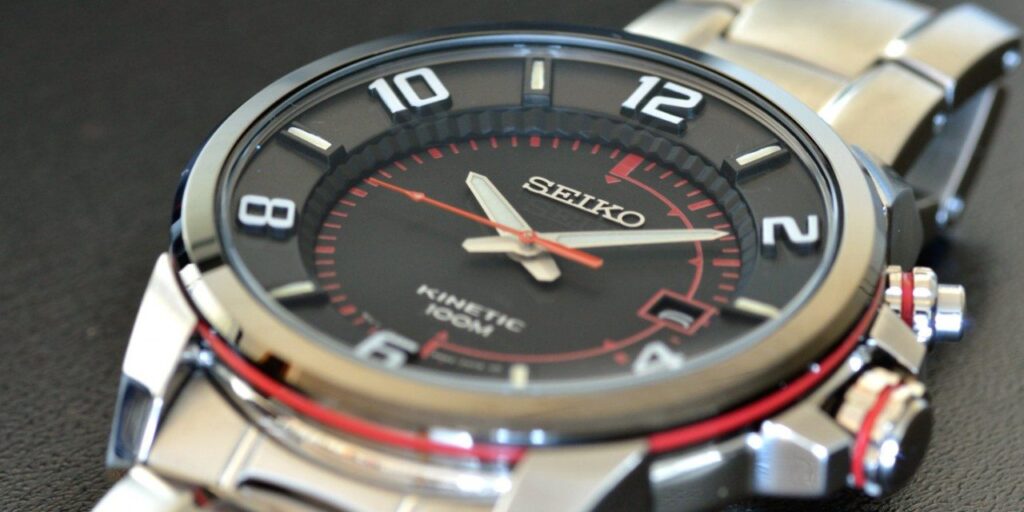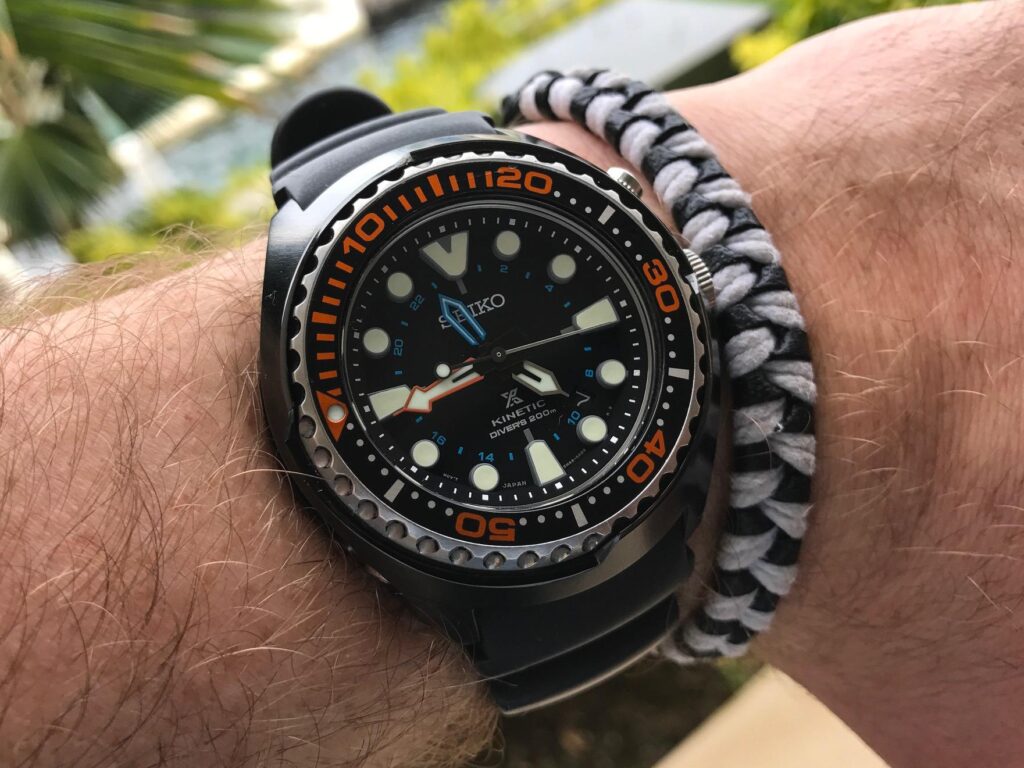How to Upkeep a Kinetic Watch

Kinetic movements use a power source called a capacitor. This capacitor is powered by the movement of a spinning counterweight. Counterweights on Kinetic watches work like winding rotors on a mechanical wristwatch. However, instead of winding a mainspring, the counterweights on Kinetic watches generate kinetic energy to power their capacitors. Known as “automatic quartz” watches, these timepieces do not require regular battery changes—because they automatically power the quartz capacitor while on the wearer’s wrist. This is where the main issue in maintaining a Kinetic watch comes into play: Not wearing the Kinetic watch.
Keeping It Wound
That’s right, the most common mistake that’s made with capacitor-powered Kinetic watches is simply not wearing them. Because these watches run on a charge, they function like other wind-up electronics. If they’re left unworn for prolonged periods of time, their rechargeable capacitor will start to lose its ability to stay powered. However, unlike other windable gadgets, these watches will hold a charge for days at a time—as long as they’re kept regularly wound. If you are an owner of a Kinetic watch that cannot regularly wear it, it’s often worth investing in a watch winder. These helpful machines hold the watch on a sleeve and spin continuously, giving the capacitor a regular charge. Watch winders are helpful for both quartz automatic watches as well as mechanical automatic watches—for those who own a variety of automatic timepieces. Furthermore, time will take its toll on a Kinetic capacitor. Regular watch winding will stave off the decay of the capacitor’s ability to recharge. Some Kinetic watches will age better than others. Once a Kinetic watch loses its ability to stay charged entirely—it is then time to replace the capacitor.
Capacitor Refresh

Responsible Kinetic capacitor replacement involves a few factors. Firstly, having an experienced watchmaker or watch technician perform this replacement is highly advised. Although it has the potential to be a DIY job, the movement itself can be easily damaged if Kinetic capacitor replacement is not done properly. This potential damage doesn’t just come from the act of changing the capacitor—which, with the wrong tools, can damage the copper coil or circuits built into the quartz movement—it also involves the seals on the watch. There is a gasket seal that is built into virtually every wristwatch. Kinetic watches are no exception for this upkeep. Aging of the watch, as well as opening the seal, make a Kinetic watch more vulnerable to dust and moisture damage. Always keep up the seal of a Kinetic watch, or any other personal timepiece. This includes replacement of any damaged crystals—the seal on a Kinetic watch is affected by the relative wear or damage regarding the crystal.
A Brief Recap and Final Suggestions
The best ways to maintain a Kinetic wristwatch are to keep it regularly wound, to keep its capacitor refreshed as it ages, and to maintain the seal when replacing the capacitor. The number one thing to focus on maintaining is the charge in the capacitor. This can determine the difference between years of use, or just months of stagnation, before needing a heftier upkeep. As well, other factors such as the “death” of the quartz movement should be explored if changing the capacitor does not solve any winding issues with a Kinetic watch. Like anything with moving parts, things can and will wear down. So, utilize the tips fleshed-out in this post to keep your Kinetic watch running fine well into the future.
Times Ticking has been in operation for more than 30 years, since 1982. We have performed watch repair for customers both locally and internationally. If it Ticks! We KNOW it! Our team of watch repair technicians have a combined experience in watchmaking of over 120 years.

